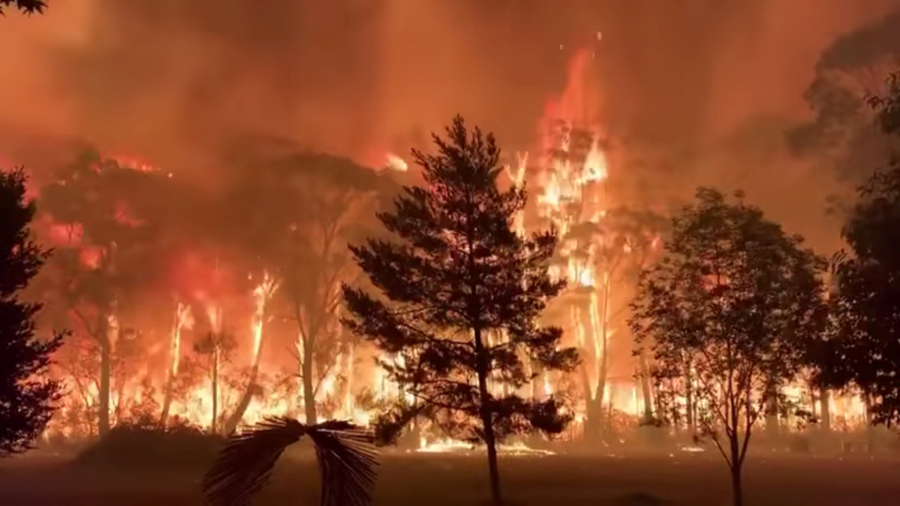The number of livestock deaths is rapidly rising amid raging Australian bushfires.
Approximately 6,284 livestock have been killed as of Tuesday morning, said Pete Arkle, chief executive of the New South Wales (NSW) Farmers Association. And about 5,000 of those deaths have occurred in the past two weeks, reported the Australian Associated Press.
The NSW Department of Primary Industries (DPI) said about 400 livestock died around Lithgow and Bathurst and 700 were killed in Northern Tablelands, North Coast, and Hunter.
Arkle told the Daily Mail he expects livestock deaths to reach 20,000.
“The anecdotal feedback we are receiving from the south of the state is that there have been substantial stock losses over the weekend,” he told AAP. “It will probably be between 10,000 and 20,000,” he said, adding, “Some people had some lead time so they could move stock.”
There is also a fear that the losses to livestock could surpass 100,000, as farmers in the affected areas begins to figure out how much has been lost in the bushfires, according to ABC Australia. In addition, the federal government dispatched veterinarians to help out with the livestock that are still alive amidst the devastating losses.
One farmer said that when the fire approached her property in the Nariel Valley near Corryong in north Victoria on Dec. 31, 2019, she, like many of the other farmers, decided to open the gates to the farm in hopes that would give their animals a better chance of escaping the fire, but said that many of them did not end up surviving.
“It’s heartbreaking,” Belinda Attree told ABC Australia. “The cattle were just dead in the paddock and my husband was just trying to put them all in one place to dispose of them.”
She said watching her husband pick up the deceased animals with farming tools like the forks on their tractor, that the animals just fell apart.
“They just cook on the inside and explode,” Attree said.
The federal government is also working to help the farmers with their losses and, according to the news outlet, Bridget McKenzie, the Federal Agriculture Minister, said they were working to assess the level of catastrophe. McKenzie said when she surveyed the area of the burning, she saw thousands of dead animals.
“In the South Australian fires—the Adelaide Hills—there would have been a little over 3,000 head deceased as a result of the fires directly, but in the subsequent weeks we’ve seen stock really dying because of heat stress and smoke inhalation,” McKenzie said.
Although the fires in the area haven’t died down, the government’s priority will be delivering food and water, as well as disposing of the deceased animals. AAP reported that the New South Wales Department of Primary Industries is providing struggling farmers with emergency supplies, such as food and water, animal care, livestock assessment, and stock euthanasia or burial should that be necessary.
“When we are talking to state farming organizations, they are saying first and foremost we need to get fodder into these herds, and they also need clear water. The second thing they are asking is around access back to property and the fencing recovery task … and mental health issues that will be ongoing,” McKenzie said.
According to the news outlet, the government will aim to have all the deceased animals buried within a week.
“The sooner we can dispose of dead livestock the sooner our farmers can begin the hard and long road to recovery. Our government is here to support them on that journey because a strong agriculture sector underpins strong rural and regional communities and ultimately a strong national economy,” a news release issued by McKenzie stated.
The full extent of the damage will be unknown for a long time, but a market analyst company put together a map that marked out the impacted livestock in the area. About 8.6 million sheep—12 percent of the country’s sheep flock—and 2.3 million cattle—9 percent of the country’s cattle—live in the affected areas.
It could take months for the details of losses to come through, considering the size of the affected area.


